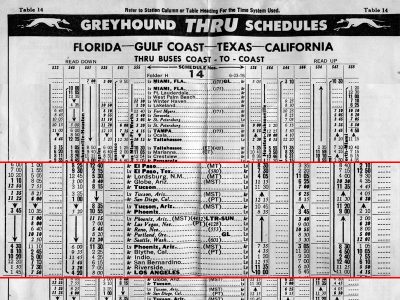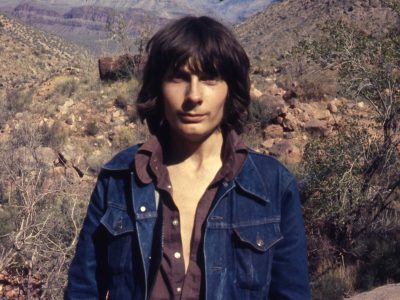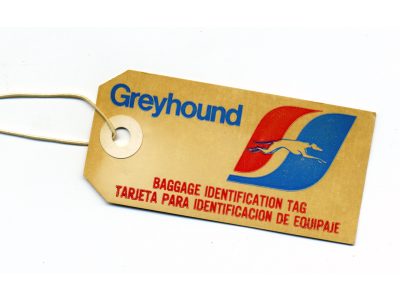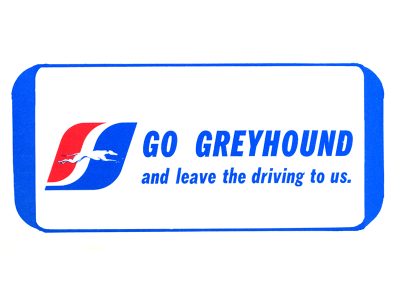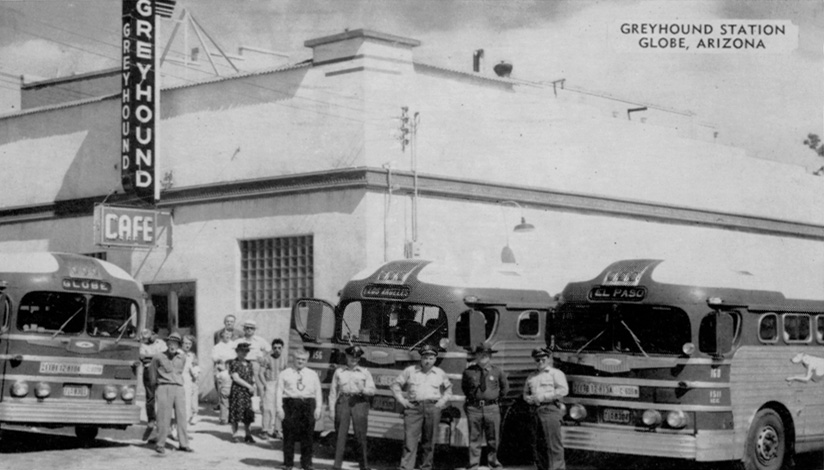
NOW BOARDING FOR GLOBE
A PERSONAL TALE
In the fall of 1976, the Bicentennial year, I vividly remember stepping off a Greyhound bus into the warm night air at the local depot in Globe. Little did I know that I was only a mile or so away from the home of a girl who would later become my life-partner. But that is another story, and one you can read about elsewhere in these pages.
THE RISE AND FALL OF GREYHOUND
Greyhound Lines has played a significant role in the history of transportation across the United States, and Arizona has been an essential part of that journey. From its early beginnings as a regional bus company to becoming a key player in Arizona’s transportation network, Greyhound has provided reliable and affordable travel for generations of passengers.
Greyhound’s origins date back to 1914 in Hibbing, Minnesota, but the company quickly expanded across the country. As road infrastructure improved, the demand for intercity bus travel grew, leading Greyhound to establish routes throughout the Southwest, including Arizona. By the 1920s and 1930s, Greyhound buses were a common sight on Arizona’s highways, linking rural towns like Globe and Miami to larger cities like Phoenix and Tucson.
The rapid growth of Greyhound in Arizona was fueled by the increasing population and economic development in the state. By the mid-20th century, Arizona had become a hub for tourism, particularly with the rise of destinations such as the Grand Canyon and Route 66. Greyhound capitalized on this by offering direct services to these attractions, helping tourists explore the state while providing a vital transportation link for residents.
During World War II, Greyhound played a crucial role in transporting military personnel to and from Arizona’s many military bases. The bus company became an essential service for soldiers and their families, further cementing its importance in the region.
The 1950s and 1960s were considered the golden age of bus travel, and Greyhound was at its peak in Arizona. The company built modern bus terminals in major cities, including a state-of-the-art station in downtown Phoenix. These terminals became bustling hubs of activity, serving as gathering places for travelers from all walks of life.
Greyhound’s iconic Scenicruiser buses, introduced in the 1950s, became synonymous with long-distance travel. Featuring a distinctive two-level design, air conditioning, and comfortable seating, these buses made cross-country trips, including those through Arizona, more enjoyable for passengers.
The rise of the automobile industry and the expansion of air travel in the 1970s and 1980s led to a decline in bus ridership. Greyhound faced financial struggles and competition from other forms of transportation. In 1971, the Greyhound story took on even more local significance when the company moved its corporate headquarters to Phoenix.
Throughout the late 20th and early 21st centuries, Greyhound adapted by modernizing its fleet, improving customer service, and adjusting routes to meet changing travel demands. Despite these challenges, the company remained a vital transportation provider, particularly for those without access to personal vehicles or air travel.
Today, Greyhound continues to operate in Arizona, providing intercity and interstate bus services. Sadly, like the fate of many other great American brands, Greyhound was bought by a foreign company. In Greyhound’s case, it was the UK bus company FirstGroup and the sale occurred in 2007. The company was resold again to German bus company FlixBus. In 2022, all the terminals were subsequently divested to a US hedge fund company Twenty Lake Holdings LLC, who proceeded to dispose of them, leaving passengers without any facilities. It is a sad state for all of us who remember the golden age of traveling by Greyhound, and the many precious memories those journeys will always evoke.
I’ve traveled to just about every corner of the country by Greyhound back in the day. At every stop, you were greeted by the familiar aroma of fried chicken and cinnamon swirls from the depot cafes, while the onboard restrooms always carried the almost intoxicating smell of citrus. On one such trip, I recall being seated with an elderly gentleman who both in appearance and attire bore a striking resemblance to Grandpa from The Waltons. As the miles rolled by, he proceeded to tell me about his life deep in the Ozarks, where his family made a living by picking a plant known as Bloodroot. That was one of the true joys of traveling by Greyhound in that friendlier age, the people who you met and the stories they had to tell.
THE EDITOR

INTERIOR OF THE OLD GREYHOUND DEPOT ON W OAK ST
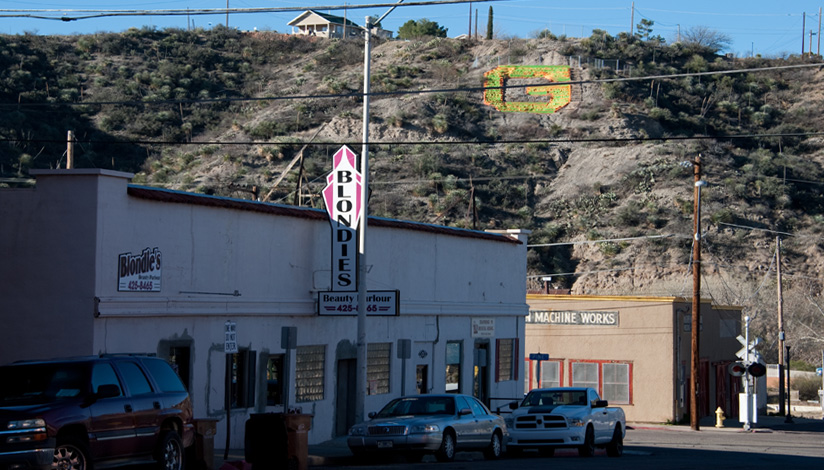
THE OLD GREYHOUND DEPOT AS IT IS TODAY
- GREYHOUND TIMETABLE, 1976
- THE EDITOR ON THE ROAD IN ARIZONA, 1976
- GREYHOUND LUGGAGE TAG, 1976
- GREYHOUND AD, 1980

